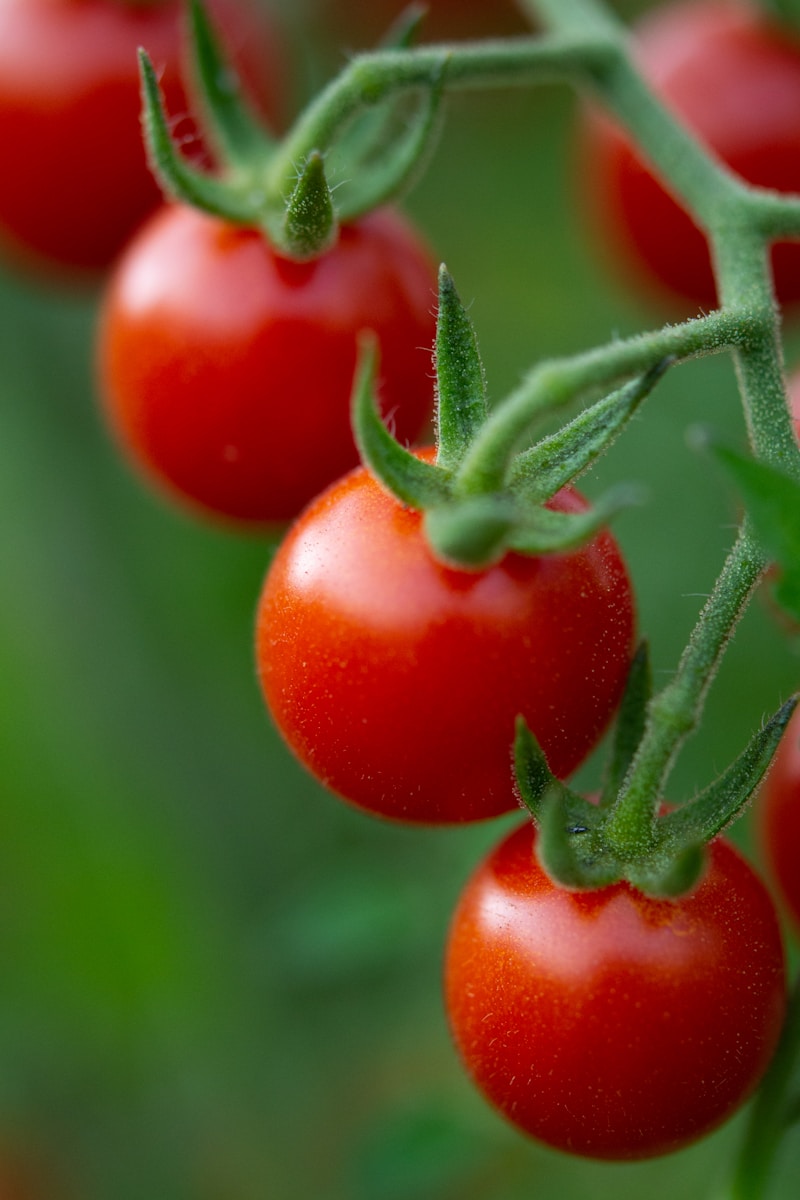Cherry tomatoes, with their juicy sweetness and vibrant color, are a beloved ingredient in salads, pasta dishes, and snacks around the world. But one ongoing debate has been whether or not these little bursts of flavor should be stored in the fridge. The answer? Definitely not! While many people instinctively pop them into the refrigerator, doing so can actually degrade their quality and ruin their taste and texture. In this article, we’ll dive deep into why cherry tomatoes should stay out of the fridge and explore the science, history, and proper storage techniques behind this kitchen dilemma.
The Science Behind Tomatoes and Refrigeration
To understand why cherry tomatoes don’t belong in the fridge, it helps to look at their biology. Tomatoes, including cherry tomatoes, are technically a fruit (though they are often treated as a vegetable in the culinary world). They belong to the Solanaceae or nightshade family, which includes eggplants, bell peppers, and potatoes. Like most fruits, tomatoes are highly sensitive to cold temperatures.
- Enzymatic Activity: Tomatoes, including cherry tomatoes, ripen due to the activity of certain enzymes. These enzymes are responsible for developing flavor and breaking down pectin, a substance in the tomato’s cell walls that gives them their firmness. When tomatoes are refrigerated, these enzymes become less active or stop working altogether. This halt in enzymatic activity disrupts the natural ripening process, which is why refrigerated tomatoes can lose their rich flavor and appealing texture.
- Cellular Damage: Cold temperatures also damage the cells inside a tomato. This is particularly true for temperatures below 50°F (10°C). When exposed to cold, the water inside the cells can freeze or expand, causing the cell walls to break down. This results in a mealy or mushy texture that many people find unappetizing. Once a tomato’s texture has been damaged by the cold, it cannot be revived, even if brought back to room temperature.
- Flavor Loss: One of the most important reasons not to refrigerate cherry tomatoes is the effect cold temperatures have on their flavor. When tomatoes are exposed to cold, they lose some of their volatile compounds — the compounds responsible for their aroma and taste. These compounds are what give tomatoes their distinct “tomatoey” flavor, with hints of sweetness, tanginess, and umami. Refrigeration diminishes these aromas, leaving you with a bland, tasteless tomato.
- Chilling Injury: The scientific term for the damage tomatoes undergo in the cold is “chilling injury.” This term refers to the irreversible damage caused to the texture and flavor of tomatoes when they are stored in temperatures that are too low. Chilling injury also causes the skins of cherry tomatoes to wrinkle or pucker, making them less visually appealing.
The History of Tomato Storage
Historically, tomatoes were never stored in refrigerators because, until relatively recently, refrigerators weren’t a common household appliance. Tomatoes were grown seasonally, harvested, and consumed when ripe. Tomatoes originated in South America, particularly in the region that is now Peru and Ecuador, where the climate is warm. The tomatoes that were cultivated there were adapted to these warm conditions, and as a result, they thrive in temperatures between 55°F and 70°F (13°C and 21°C). This is why storing tomatoes in cool, but not cold, conditions is ideal.
As tomatoes spread across the globe, through Europe and eventually to North America, the practice of storing them at room temperature continued. It was only with the advent of modern refrigeration in the 20th century that people began to refrigerate tomatoes. However, doing so was more out of convenience or habit than necessity.
Room Temperature: The Best Way to Store Cherry Tomatoes
For optimal taste and texture, cherry tomatoes should be stored at room temperature, away from direct sunlight, and in a single layer to avoid bruising. Storing them in this way allows them to continue ripening, which can actually enhance their flavor. Here’s why:
- Ripening Process: Cherry tomatoes, like all tomatoes, continue to ripen after they are picked. At room temperature, they produce ethylene gas, a plant hormone that promotes ripening. This is why tomatoes left on the counter can develop a deeper red color and more robust flavor over time. Storing them in the fridge, on the other hand, halts this process, leaving you with an underdeveloped flavor.
- Even Ripening: Cherry tomatoes ripen from the inside out. When stored at room temperature, the ripening process happens evenly. The flesh inside becomes sweet and tender, while the skin retains its firmness. When tomatoes are refrigerated, the interior may stay firm or even become mealy, while the skin remains tough or develops wrinkles.
- Flavor Development: Storing cherry tomatoes at room temperature allows their natural sugars and acids to develop fully. The balance of sweetness and acidity is what makes cherry tomatoes so flavorful, and this balance is best achieved when the tomatoes are allowed to ripen in a warm environment.
Exceptions: When to Refrigerate Cherry Tomatoes
While it’s generally best to keep cherry tomatoes out of the fridge, there are a few exceptions. If you’ve already cut a tomato or have some that are very ripe and you don’t plan to eat them immediately, refrigerating them can help extend their shelf life — but only for a short period. Even in this case, there are some strategies to minimize the damage caused by cold storage:
- Refrigerating Very Ripe Tomatoes: If your cherry tomatoes are on the verge of becoming overripe (soft to the touch, very red, or starting to split), refrigerating them can slow down the ripening process and prevent them from spoiling too quickly. However, try to eat them within a few days, as their flavor and texture will still deteriorate over time.
- Letting Them Return to Room Temperature: If you must refrigerate cherry tomatoes, take them out of the fridge at least an hour before eating to let them return to room temperature. This can help some of the flavor compounds recover, though it won’t fully reverse the damage done to their texture.
What Happens When You Refrigerate Cherry Tomatoes?
Refrigerating cherry tomatoes can result in the following changes:
- Mealy Texture: One of the most common complaints from people who refrigerate tomatoes is the grainy, mushy texture they develop. This is a result of cold-induced cellular damage. Instead of being juicy and firm, refrigerated tomatoes become soft and less pleasant to eat.
- Loss of Flavor: As mentioned earlier, cold temperatures suppress the compounds that give tomatoes their vibrant flavor. A refrigerated tomato can taste flat or bland compared to a room-temperature tomato that has fully ripened.
- Wrinkled Skin: The skin of cherry tomatoes is delicate, and exposure to cold can cause it to wrinkle or shrink. This not only affects the appearance of the tomatoes but also their texture.
- Reduced Shelf Life: While it may seem counterintuitive, refrigerating tomatoes can sometimes reduce their shelf life. Once they start to deteriorate in the cold, they can go from bad to worse very quickly, resulting in wasted food.
How to Store Cherry Tomatoes Properly
To keep your cherry tomatoes tasting fresh and delicious for as long as possible, follow these storage tips:
- Room Temperature: Always store cherry tomatoes at room temperature, away from direct sunlight. A countertop or pantry shelf is perfect.
- Single Layer: Avoid stacking or piling the tomatoes on top of each other, as this can cause bruising and uneven ripening. Place them in a single layer, preferably on a flat surface.
- Air Circulation: Ensure there’s enough air circulation around the tomatoes. You can store them in a shallow bowl or tray lined with a paper towel to absorb excess moisture.
- Check Regularly: Keep an eye on your cherry tomatoes and check for any that may be ripening faster than others. Use the ripest ones first to avoid spoilage.
Final Thoughts
The next time you’re wondering whether to pop your cherry tomatoes in the fridge, remember: definitely not! Storing them at room temperature will allow them to ripen fully, giving you the best flavor, texture, and overall eating experience. Whether you’re making a salad, tossing them in pasta, or enjoying them as a snack, properly stored cherry tomatoes will reward you with their vibrant, juicy goodness.
By keeping cherry tomatoes out of the refrigerator, you’re not only preserving their quality but also honoring the rich history and science behind this beloved fruit. The best-tasting tomatoes are those that have been allowed to ripen naturally, at room temperature, just as they’ve been enjoyed for centuries.
In the end, the key to great-tasting cherry tomatoes is simple: keep them warm and let them shine in their full glory!










